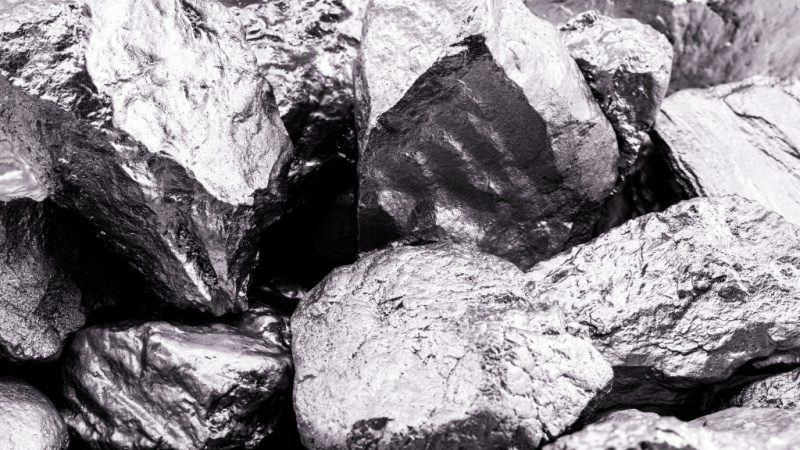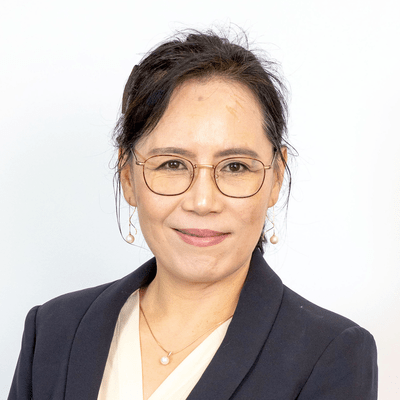Will China seek to exploit its rare-earth dominance?
November 26 2022

By Marina Zhang
Note: This article appeared in The National Interest on November 26 2022.
At a recent Advancing AUKUS Plus conference in Canberra, Australia’s former defence minister Kim Beazley noted that ‘3,400 American weapons systems have Chinese rare earth components, and it is imperative to break the dependence of Western democracies on China.’ In addition to weapons, China’s rare earths are critical elements not only in smartphones and aircraft engines, but also in electric vehicles, wind turbines, and other new energy machinery.
What are these rare earths? They are a group of seventeen metallic elements that are abundant in nature and are essential to future technologies. However, extracting, smelting, separating, and processing these elements is a capital- and labour-intensive industry. At the moment, China dominates the supply chain. In 2021, it accounted for about 60 percent of global production of final rare earth compounds, and held about 37 percent of the known natural reserves. Since 2018, it has become the largest rare earth importer, mainly of intermediate rare earth compounds for further processing.
China’s control thus has many wondering: could Beijing use its influence over the rare earths supply chain as a form of geopolitical leverage?
China’s dominance came at a high environmental cost
In the late 1980s, China’s pioneer reformist Deng Xiaoping famously said, ‘The Middle East has oil. China has rare earths.’ This is only half true—while China does have rich rare earth reserves, until the early 2000s it sold low-processed rare earths to the rest of the world at market price. It is China’s development, and now its dominance over refining and processing technologies, that makes rare earths a strategic resource for the country.
China started dominating the global supply of rare earths in the early 1990s. Incentivized by various industrial policies, including export tax rebates, the sector entered a period of ‘barbaric growth.’ A decade later, hundreds of miners, including illegal ones, produced and exported low-value-added rare earth ores and less-processed rare earth concentrates to the global market. At its peak, China’s supplies of rare earths were more than double what the world needed; the fierce competition among Chinese suppliers drove down the price globally, and substantially reduced China’s reserves of rare earths. Consequently, traditional rare earth producers such as the United States, Japan, and France essentially gave up on production, turning instead to using China’s cheap supplies.
Such wild, largely unregulated growth had its consequences; namely, enormous environmental damage in China. According to an official report, in one county in Jiangxi, where heavy rare earth elements are rich, it cost the government more to clean up the damage caused by toxic waste than all the profits realized from selling rare earths from that area.
By the 2000s, China changed its official policy on rare earth mining and production. The government reduced export quotas and increased taxes on exporting raw rare earth ores and less-processed compounds, aiming to increase the production of more-processed rare earth compounds. To upgrade their processing technology, Chinese miners formed joint ventures with foreign partners. Leveraging its low labour costs and relaxed environmental control measures, China quickly attracted many such ventures. By 2005, China became the world’s largest rare earth compound exporter.
Concerns, however, began to form. In 2009, China started to impose stricter environmental controls over rare earth mining and production. The following year, in 2010, Western media noted that China used its dominance in rare earths as a political weapon, restricting supplies to Japan during a heated dispute over Senkaku/Diaoyu Islands. The price of rare earths soared on the global market.
While rare earths might have been de facto weaponized, Beijing never declared nor acknowledged such an embargo. The price increase could also be attributed to higher production costs, as a result of using more environmentally-friendly technologies and equipment in the production of rare earth compounds. In fact, such environmental measures drove many small miners out of business, which left the country with six state-owned rare earth corporations that control the entire supply chain.
Technology-driven supply chains
As in many catching-up industries, China initially developed its low-value-adding production capabilities through imitations and technology learning from its foreign partners. However, to forge ahead and become the global leader, in 2011 China started to invest in indigenous R&D and technology acquisition, as well as educating specialized talent. For example, it established two rare earth R&D hubs, one in Changchun, Jilin Province, the other in Baotou, Inner Mongolia. In these hubs, thousands of engineers with degrees in material sciences, metallurgy, chemistry, rare earth materials, and related fields, devoted themselves to finding and perfecting new methods in rare earth processing, covering mining, smelting and separation, refining, and production. No other country has such large-scale concentrated talent in this field.
This investment in R&D is reflected in China’s rare earth-related patent filings, which took off starting in 2011. According to PatentManiac, as of October 2019 (thus, in less than ten years), China had filed 25,911 patents, far ahead of the accumulated 9,810 patents held by the United States, 13,920 by Japan, and 7,280 by the European Union—most of which started their filing in the 1950s. During the same period, the cumulative number of approved rare-earth patents filed by China exceeded the combined total of all other countries.
In short, China’s dominance in rare earth processing technology has become its core competitive advantage in the global rare earth supply chain.
From largest exporter to largest importer
The rare earth supply chain is composed of three stages: upstream, which includes extracting raw rare earth ores and smelting them into rare earth concentrates such as rare earth oxides, metals, and alloys (which were the main products China exported in the 1990s); middlestream, where rare earths need to be separated and processed from these concentrates to become low processed compounds; and downstream, which consists of using the compounds from the midstream to manufacture high value-added materials, such as magnets. China is the only country that covers the entire value chain of all seventeen rare earth elements from mining to processing, and controls 80 percent of the global production in high-value-added activities.
Since 2018, China has become the largest importer of rare-earth products—largely intermediate products from upstream and midstream suppliers, as well as raw heavy rare earths that China is short of. After high-value-added processing, China exports part of its rare-earth compounds. For example, even after the United States re-opened its Mountain Pass mine in California in 2018—currently the country’s only rare earths mine—as an effort to build its own rare earth processing capability onshore, it still needs to ship most of its rare earth concentrates to China for further processing before shipping the final products back to America. Japan, the United States, the Netherlands, and South Korea are the largest importers of China-processed rare earth compounds.
China is also the largest consumer of rare earth products, accounting for 60 percent of the global total—primarily due to rapid growth in its domestic production of electric vehicles, wind turbines, and various military applications.
According to China’s General Administration of Customs, during the first ten months of 2022, the total amount of rare earth exports (about 80 percent of which were high-value-added compounds) was 41,471 tons. Still, the amount of rare earth imports (intermediate compounds and raw ore) was 103,837 tons, meaning its imports were more than twice its exports.
Key strategic resources in geopolitical competition
Rare earths’ importance has long made them a ‘strategic resource’ in geopolitical competition, especially between the United States and China. Back in 2018, the US Department of Interior identified 35 minerals crucial for its national and economic security, including seventeen rare earth elements.
Subsequently, in December 2020, China circulated a policy framework—Rare Earth Management Regulations—for consultation. This document was taken as China’s strategic response in its management of rare earths, balancing exports and strategic reserves.
Yet while existing reserves may last hundreds of years for human use, rare earths are nonrenewable resources. A critical question thus arises as to whether China will use its dominance in rare earth reserves and production as leverage to advantage itself in geopolitical competition.
The implications
Kim Beazley’s estimation that ‘Australia has the capacity to completely replace the dependency of the West on China dominated supply chain within five to ten years’ is not very realistic, since—as noted above—there are three major barriers that Australia (or indeed, any other country with rare earths) would need to overcome to achieve this goal:
1. China-dominated patents
2. Huge environmental costs
3. A shortage of high-talent manpower
Overcoming these barriers would take Australia, or any similar country, perhaps ten to fifteen years and billions of dollars. This (boldly) assumes that China won’t make further significant technological breakthroughs. Even after the US Department of Defence funded $30 million to the Australian rare earth corporation Lynas to build a heavy rare earth refinement facility in Texas, this facility still needs to ship most of its intermediate products to China for further processing. Whether the timeframe suggested by Beazley is realizable and where the money would come from remain very unclear.
It should also be noted that it is unusual for the US Defence Department to support Australian commercial entities. This perhaps reflects the strong and serious strategic objective of a US-led alliance to build a separate supply chain for rare earths.
The question then becomes is who will benefit from this and at what cost?
From the perspective of the United States, in the event of a confrontation with China, it would be highly likely that China would use its dominance in rare earths to its geostrategic advantage. With the current high reliance on China’s supply chain for rare earths, Western democratic countries would suffer catastrophic consequences in their economies and defence in such an event. For that reason, the rare earth supply chain is considered ‘America’s critical strategic vulnerability,’ and the United States must lead in building a Western supply chain to counter China’s potential threat.
From China’s perspective, given its heavy reliance on the global supply chains of semiconductors and other technologies critical to its digital ambitions, it would not be likely to use its ‘wild card’ of rare earths, unless strategically cornered. As suggested in Xi Jinping’s recent speeches at the G20, China intends to continue to open up and maintain the status quo of the highly interdependent global value chains, from which it has benefited greatly.
From a global perspective, one common issue the world is facing is promoting clean energy to fight climate change, and rare earths are critical in wind turbines and solar panels, as well as batteries used in EVs. Without rare earths, none of those clean energy solutions would be possible and the fight against climate change would be fruitless. As argued in a report by the International Energy Agency, various critical minerals, especially rare earths, play a vital role in the clean energy transition, which also reflects an EU perspective. To solve the mismatch between the world’s climate ambitions and the vulnerability of the rare earth supply chain, a global effort, including R&D and investment in advancing technologies to recycle critical minerals, is key.
Returning to Kim Beazley’s concerns over rare earths, Australia holds the fifth-largest rare-earth reserves in the world and is the fourth-largest exporter of rare earths. It may be wise for Australia to align with the EU to take a global perspective on managing rare earths—joining the global effort in R&D and investment for recycling rare earths and dealing with climate change—rather than being an ‘out-and-out pawn’ of the United States.
Dr Marina Zhang is Associate Professor – Research at the Australia-China Relations Institute, University of Technology Sydney.

